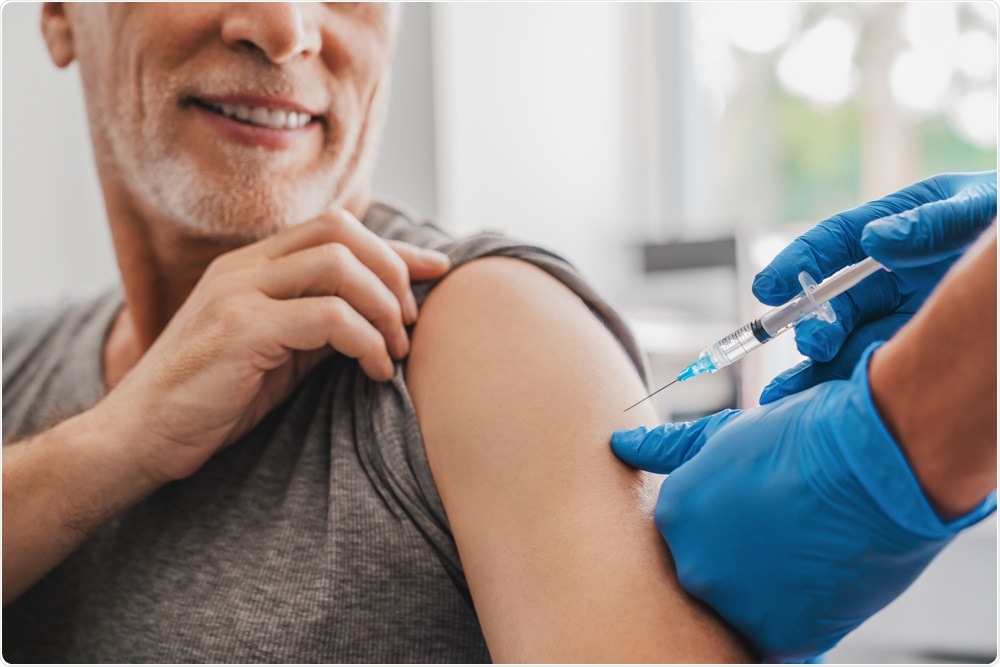A national statistics study on vaccine uptake disparity in England
The United Kingdom began the widespread distribution of coronavirus disease 2019 (COVID-19) vaccines in early December 2020. By September 27, 2021, 89.6% of the adult population in the U.K. had received at least one dose of the vaccine.
High vaccination rates have been associated with reduced hospital admissions, thereby providing healthcare systems some relief from the pandemic. However, amongst some groups, vaccine uptake remains low. Furthermore, factors associated with vaccine uptake prior to the COVID-19 pandemic, such as socioeconomic status or religion, have been reflected in COVID-19 vaccine uptake.
 Study: Monitoring sociodemographic inequality in COVID-19 vaccination coverage in England: a national linked data study. Image Credit: Inside Creative House / Shutterstock.com
Study: Monitoring sociodemographic inequality in COVID-19 vaccination coverage in England: a national linked data study. Image Credit: Inside Creative House / Shutterstock.com
In a recent study published on the preprint server medRxiv*, the disparity in vaccination rates across England is investigated based on a number of demographic variables, finding significant differences based on ethnicity and religion.
Vaccine adoption based on ethnicity and religion
Vaccination data sourced from the National Health Service (NHS) England was utilized in combination with census records to gather vaccination status and demographic information on over 35 million individuals over the age of 18 who had received at least one dose of a COVID-19 vaccine.
Of these individuals 52.4% were female, 82.4% were white, and 60.5% were Christian, with 5.7 or 8.8% reporting serious or mild disability, respectively. Overall, vaccine coverage for females was more complete, particularly in younger age groups, as vaccine uptake was approximately equal between sexes for the elderly.
Interestingly, the gap in vaccine adoption between young adults of different sexes declined notably over time to become almost equal. This is potentially due to the early vaccination of healthcare professions predominated by women.
When considering all age groups, white British and Indian ethnic groups had the highest vaccine adoption rates, while black Caribbean, black African, mixed, and Pakistani ethnic groups had the lowest. Unlike the difference in vaccine uptake between sexes, this difference did not decline and was instead exacerbated over time.
Age-based differences within each ethnic group were noted. For example, vaccine uptake was lowest amongst black Caribbean individuals aged 18-79 years and amongst black African individuals aged 80 and over. As of August 2021, the researchers found that 90% and 88% of adults identifying as white British or Indian, respectively, had received the vaccine, while only 57% identifying as black Caribbean had.
When categorizing vaccination rates against religion, the authors note that Hindu and Christian's groups had the highest adoption rates, while adoption was lowest amongst those identifying as Muslim, 90% compared to 71%. Amongst individuals aged 18-29, religion appears to play a larger role in vaccine uptake, with the greatest margin of almost 80% of Hindus, around 75% of any other religion, and only 50% of Muslim individuals having been vaccinated.
Vaccines have only been available to this age group for a shorter period of time than the elderly, which may explain the reduction in the disparity in older age groups.
Vaccine adoption based on socioeconomic status
Vaccine adoption was next compared by economic status over time. To this end, the group observed an initially narrow but increasingly widening disparity in uptake.
The difference was again more pronounced in those aged 18-29, where only 60% of individuals in the most deprived areas had been vaccinated as compared to 83% in the least, while 95% and 98% of those aged over 80 in the same areas had been vaccinated, respectively.
Due to their early prioritization of individuals with a reported disability, this group initially had notably higher vaccination rates than the remainder of the population. However, these levels declined to normal baseline levels in the subsequent months and were eventually marginally lower than the average population at the latest time points.
Other factors that positively correlated with vaccine uptake were proficiency with the English language, homeownership, level of education attained, and status of professional occupation. For example, vaccination was higher in younger adults who had attained a degree than those that did not, though it was highest in those aged 50-59 that had completed an apprenticeship.
Overall, 93% and 91% of those with an apprenticeship or degree had received the vaccine, respectively, while 83% of those with “other” listed as their education had.
Conclusion
Lower vaccine uptake rates amongst individuals based on religion or ethnicity have been reported prior to the COVID-19 pandemic. In general, these trends have been upheld for the COVID-19 vaccine.
Importantly, this paper demonstrates differences based not only on these factors but also on age within these groups, allowing the reason for hesitancy to be more easily determined by later studies. Many of the groups with the lowest vaccine uptake rates are also those most affected by the pandemic economically, socially, and clinically. Therefore, targeting these groups for vaccination is also likely to have the most overall benefit per vaccine.
*Important notice
medRxiv publishes preliminary scientific reports that are not peer-reviewed and, therefore, should not be regarded as conclusive, guide clinical practice/health-related behavior, or treated as established information.
- Dolby, T., Finning, K., Baker, A., et al. (2021). Monitoring sociodemographic inequality in COVID-19 vaccination coverage in England: a national linked data study. medRxiv. doi:10.1101/2021.10.07.2126481. https://www.medrxiv.org/content/10.1101/2021.10.07.21264681v1
Posted in: Medical Science News | Medical Research News | Medical Condition News | Disease/Infection News | Healthcare News
Tags: Coronavirus, Coronavirus Disease COVID-19, Disability, Education, Healthcare, Hospital, Language, Pandemic, SARS-CoV-2, Vaccine

Written by
Michael Greenwood
Michael graduated from Manchester Metropolitan University with a B.Sc. in Chemistry in 2014, where he majored in organic, inorganic, physical and analytical chemistry. He is currently completing a Ph.D. on the design and production of gold nanoparticles able to act as multimodal anticancer agents, being both drug delivery platforms and radiation dose enhancers.
Source: Read Full Article



